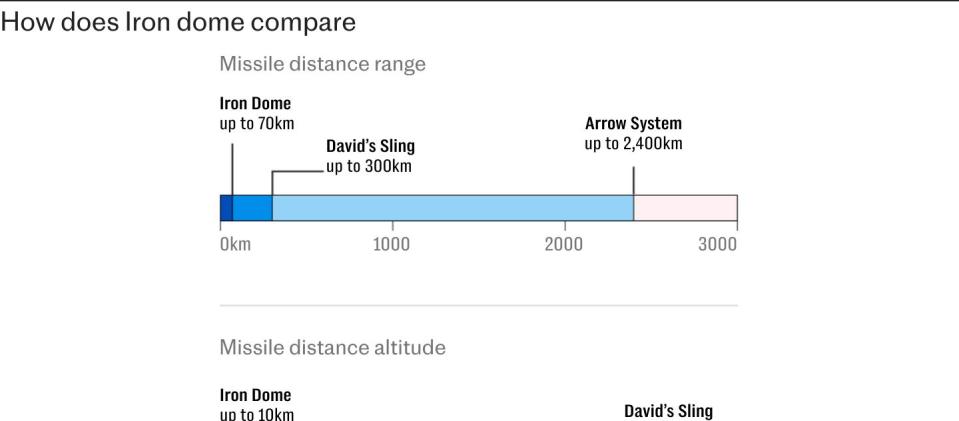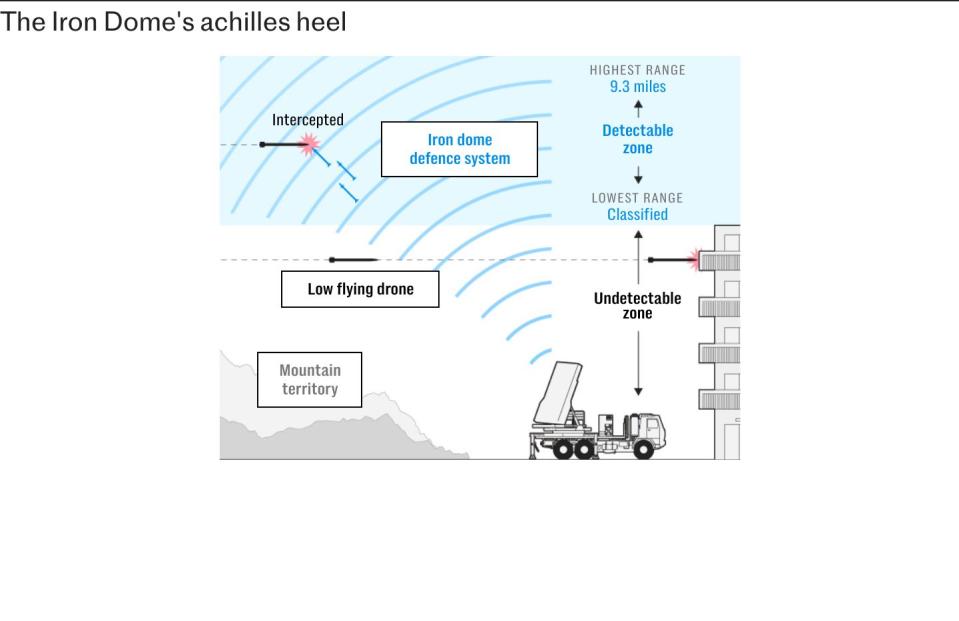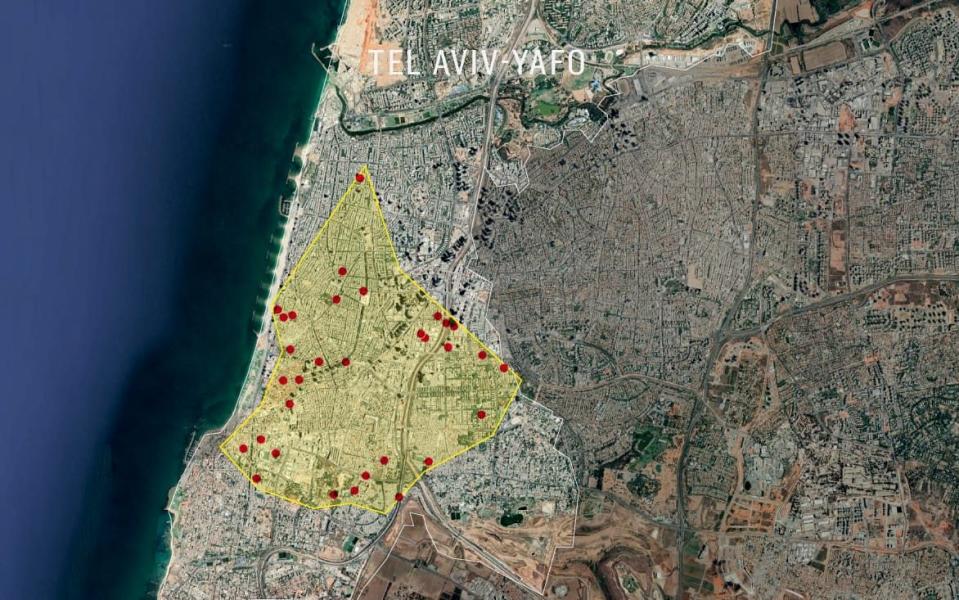The world watched helplessly as a missile barrage from Iran came raining down over Israel with less than 15 minutes’ warning.
A week after one of the heaviest single attacks in history – using advanced ballistic rockets – the full impact of the assault is only just becoming apparent.
Experts are frantically working to understand how – and if – Israel can defend itself from more waves of rockets if war continues to escalate in the Middle East.
How the Iran attack unfolded
Video filmed by a passenger on a commercial jet from Dubai captured the start of the attack, which appears to have come from near the Iranian city of Shiraz.
Shortly after, Israelis were instructed to run for shelter. Ballistic missiles are estimated to take about 12 minutes to reach their destination, first entering orbit and later re-entering the atmosphere at speed.
Videos from Jordan show the missiles streaking across the sky towards Israel, while footage from sources on the ground in Israel shows air defence systems activating, and in some cases being overwhelmed.
One video showed at least nine missiles making impact near military facilities in Israel, while detailed accounts later found many more had broken through.
Dr. Yehoshua Kalisky, Senior Researcher at INSS, a think tank in Tel Aviv, said that Iran’s intention was to “saturate the air defence system” by firing an unprecedented 180 missiles at the same time.
How Iran broke through
Israel’s air defence system consists of several layers; the Iron Dome, David’s Sling and the Arrow weapon system, the world’s first anti-tactical ballistic missiles (surface-to-air missiles used to shoot down ballistic missiles).
Each system is designed to shoot missiles out of the sky at different altitudes, with the most recent version of Arrow designed to intercept missiles in space, known as “exo-atmospheric” interceptions. Videos from bystanders caught at least one of these rare sights last Tuesday.


“The idea is to shoot down the missile as far away from Israel as possible, preferably over the enemy’s territory,” Mr Kalisky told The Telegraph. Should that fail, the next layers are ready to shoot down the missile as the altitude lowers.
“David’s Sling and finally the Iron Dome can shoot down the missile when they are close enough to the ground,” Mr Kalisky said.
Experts said the videos suggest Israel may not have enough air defence units or intercepters to catch such a heavy barrage.
Some observers also voiced concern about the speed of the missiles.
Fabian Hoffman, a missile expert and doctoral research fellow at the Oslo Nuclear Project, said the footage clearly shows the “extraordinary speed in real time, some 600/700m per second, they are incredibly fast”.
All of the missiles Iran fired were “hypersonic in essence until they re-enter the atmosphere and are slowed down,” he added.
While Hezbollah sometimes fires hundreds of rockets at Israel in a short span of time, most of them are less advanced and are intercepted more easily.
What Iran hit
Israel initially downplayed the damage caused by the attack, but later admitted that several military bases were hit – although no aircraft or critical infrastructure were damaged.
A satellite image the company Planet Labs later revealed that the Nevatim Air Base had been impacted in 30 different places, damaging hangars and buildings.
A large crater from a missile was also found near the Israeli intelligence headquarters of Mossad in Glilot, north of Tel Aviv.
In total it is estimated that more than two dozen missiles broke through air defences. Some 20 missiles struck the Nevatim air base, while three missiles hit the Tel Nof base in central Israel.
Dr Kalinsky said it appeared that the Arrow system hit the engines on some of the missiles but that they continued to fly and eventually fell on the ground.
Debris from missiles was indeed found both in the West Bank and inside Israel following the attack.
The other flaws
While most of the attention has been drawn to Iran’s direct attack, Israel has been fending off smaller scale attacks since last October.
Some experts fear that the rise in drone attacks in particular have exposed a possible flaw or achilles heel in the Iron Dome.


Hundreds of drones have been launched from Iran, Iraq, Yemen, Lebanon and Syria in the past year, killing several people and causing severe damage to buildings, roads, and homes.
They fly at a low altitude, often under the Iron Dome’s radar, forcing the Israel Defense Forces (IDF) to manually detect and shoot them down. In July, an Iranian-made drone flew 2,000 km from Yemen before striking an apartment in Tel-Aviv, killing a civilian.
What next?
Security experts have warned for years that a major coordinated missile attack by Iran and its proxies could overwhelm the air defence system and cause huge destruction to civilian areas.
After last Tuesday’s attack, the evidence suggests a full-scale Iranian ballistic missile barrage hitting a densely populated area could kill hundreds of people.


Dr Kalinsky said “a direct hit will destroy some of the buildings” if an attack was launched at Tel-Aviv, for instance. But he said civilians would likely have time to get to bunkers owing to early warning systems. However, he warned that even an indirect hit would cause significant damage to infrastructure through powerful shockwaves.
While attacking civilian areas would be a major escalation, the prospect of an all-out war between Israel and Iran has heightened concerns.
However, experts like Dr Kalinsky caution that a larger missile barrage takes time and preparation, and would likely be detected in advance.
Israel is considered to have one of the best air defence systems in the world, and certainly one of the most densely deployed.
Broaden your horizons with award-winning British journalism. Try The Telegraph free for 3 months with unlimited access to our award-winning website, exclusive app, money-saving offers and more.
